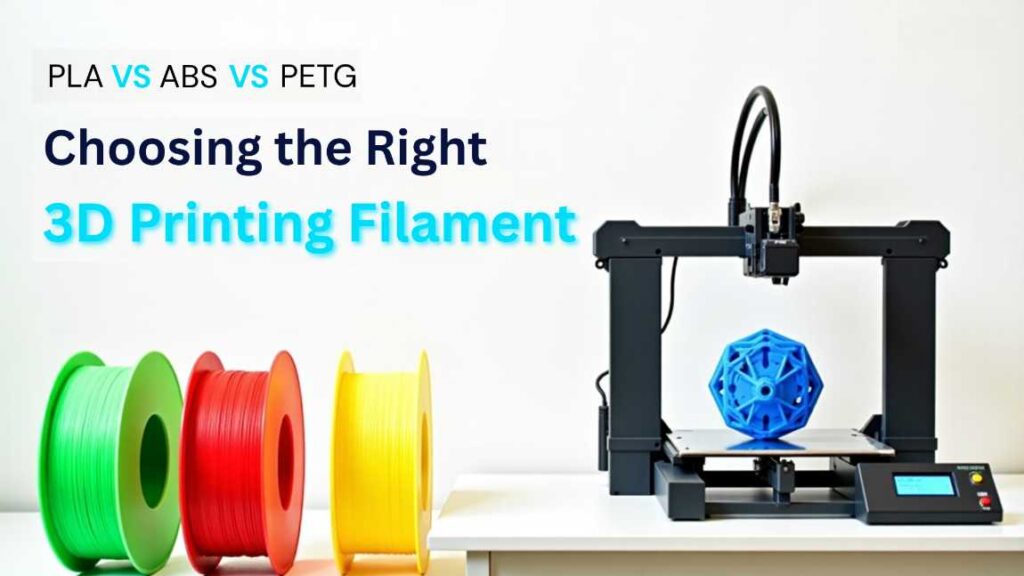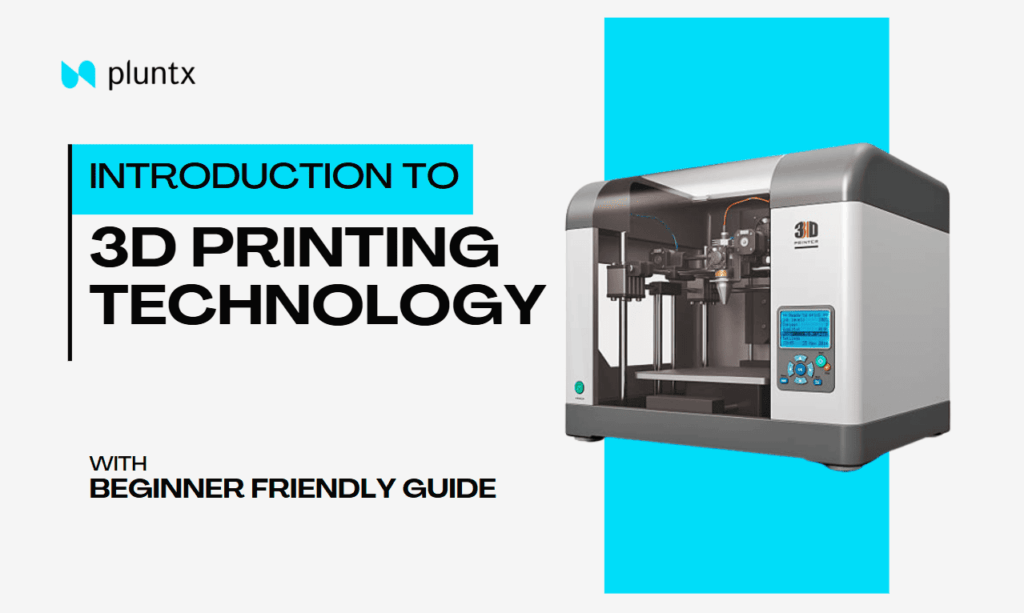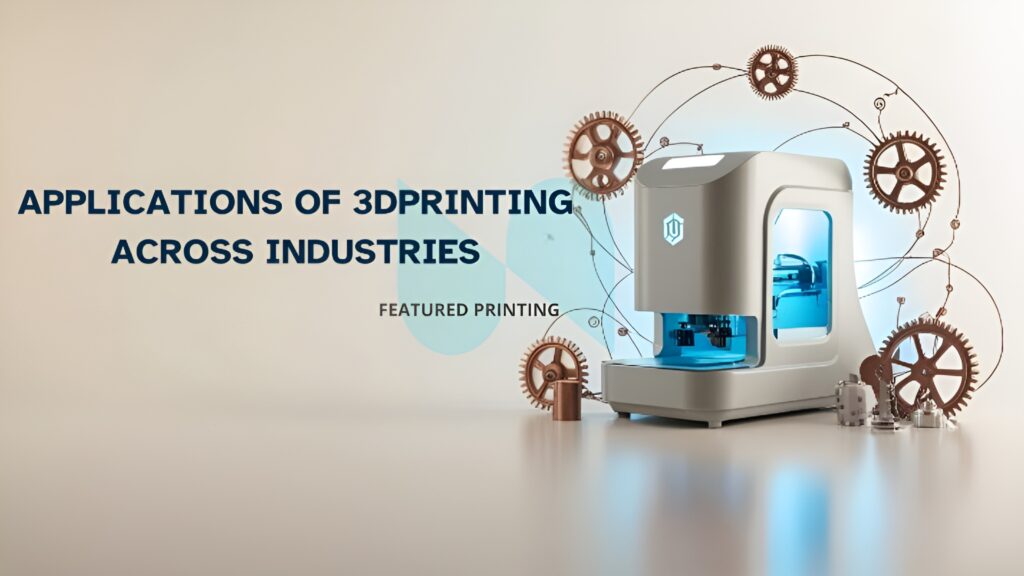
In the world of 3D printing, one of the most important factors that determines the success of your print is the type of material you choose. Each filament comes with its own unique properties, strengths, and challenges—and knowing when to use which can save time, money, and a lot of frustration.
At Pluntx, we regularly get questions like:
Which filament should I use for my electronics enclosure?
Is PETG better than ABS for outdoor projects?
What’s the easiest filament for beginners?
This guide will help you answer those questions and more. We’ll cover the most popular 3D printing materials—PLA, ABS, PETG, and others—explaining how they work, when to use them, and what to watch out for.
PLA (Polylactic Acid) — The Beginner's Favorite
PLA is by far the most popular filament in the 3D printing community. It’s made from renewable resources like cornstarch or sugarcane, which makes it biodegradable and environmentally friendly. But beyond that, it’s the easiest filament to work with—perfect for hobbyists, students, and rapid prototyping.
Technical Specs:
Printing temperature: 190–220°C
Bed temperature: 0–60°C (heated bed optional)
Strength: Moderate
Flexibility: Low
Heat resistance: ~60°C
Pros:
Very easy to print
Excellent surface finish and detail
Minimal warping—great for open-frame printers
No toxic fumes during printing
Cons:
Brittle—breaks under stress
Low heat resistance—not suitable for hot environments
Not ideal for functional mechanical parts
Ideal For:
Decorative items
Concept models
Educational projects
Low-stress prototyping
At Pluntx, we often recommend PLA to students and beginners getting started with DIY electronics and IoT casings.
ABS (Acrylonitrile Butadiene Styrene) — Strong and Heat-Resistant
ABS is a durable engineering plastic commonly found in automotive parts, power tools, and LEGO bricks. While it’s harder to print than PLA, its mechanical strength and thermal stability make it ideal for more rugged applications.
Technical Specs:
Printing temperature: 230–250°C
Bed temperature: 90–110°C
Strength: High
Flexibility: Moderate
Heat resistance: ~100°C
Pros:
Excellent strength and durability
High impact resistance
Resistant to high temperatures
Can be chemically smoothed using acetone
Cons:
Warps easily—requires enclosed printer
Strong, unpleasant fumes (needs ventilation)
Slightly harder to get perfect prints
Ideal For:
Functional mechanical parts
Automotive and robotics components
Structural casings and gears
Outdoor-use models
If your 3D print is going to be handled roughly or exposed to heat, ABS is a top choice—just be sure your setup is equipped for it.
PETG (Polyethylene Terephthalate Glycol) — The Best of Both Worlds
PETG combines the ease of PLA with some of the strength and durability of ABS. It’s tough, chemically resistant, and slightly flexible—perfect for parts that need to handle wear and tear but are too complex for ABS.
Technical Specs:
Printing temperature: 220–250°C
Bed temperature: 70–90°C
Strength: High
Flexibility: Moderate to High
Heat resistance: ~80°C
Pros:
High impact resistance
Water and chemical resistant
Less brittle than PLA
Less warping than ABS
Food-safe variants available
Cons:
Can be stringy without proper retraction settings
Needs a clean bed for good adhesion
Slight learning curve for temperature tuning
Ideal For:
Water-tight enclosures
Drone frames and mounts
Electronics housings
Prototypes that need strength and detail
Many of our Pluntx customers love PETG for printing strong, clear parts like sensor covers or containers in environmental monitoring projects.
TPU (Thermoplastic Polyurethane) — Flexible and Fun
TPU is a flexible filament that feels like rubber. It’s perfect for projects that require stretch, flexibility, or soft touch.
Technical Specs:
Printing temperature: 210–240°C
Bed temperature: 50–70°C
Flexibility: Very high
Strength: Moderate
Pros:
Extremely flexible and elastic
Shock and vibration resistant
Great for phone cases, seals, and gaskets
Cons:
Slower printing required
Can clog Bowden extruders (best with direct-drive)
Needs fine-tuned retraction and speed settings
Ideal For:
Wearables
Seals and vibration dampers
RC tires and drone landing pads
Nylon — Durable and Industrial-Grade
Nylon is one of the most tough and wear-resistant filaments out there. It’s ideal for functional mechanical parts under stress and abrasion.
Technical Specs:
Printing temperature: 240–270°C
Bed temperature: 70–100°C
Strength: Very High
Flexibility: High
Pros:
Very strong and impact resistant
Great wear resistance
Can be dyed after printing
Cons:
Highly hygroscopic—must be dried before use
Warps without enclosure
Harder to print for beginners
Ideal For:
Gears, hinges, tool parts
High-performance enclosures
Functional moving components
Specialty Filaments — PLA+ / Wood Fill / Carbon Fiber
PLA+: Enhanced version of PLA with improved strength and durability. Still easy to print.
Wood Fill: PLA mixed with wood particles for a natural finish.
Carbon Fiber Filament: PETG or Nylon with carbon fiber particles added for rigidity and lightweight parts.
If you’re working on a visually stunning or artistic model, these specialty filaments are available at Pluntx in beautiful textures and colors.
How to Choose the Right Filament?
When choosing your filament, consider the following:
| Question | Best Material |
|---|---|
| New to 3D printing? | PLA |
| Need strength and durability? | ABS or PETG |
| Want flexibility? | TPU |
| Exposed to heat or chemicals? | PETG or ABS |
| Printing gears or moving parts? | Nylon |
| Making beautiful models? | Silk PLA or Wood Fill |
Where to Get High-Quality Filament?
At Pluntx, we offer a curated collection of 3D printing filaments at student-friendly prices:
Recycled PLA starting at ₹649/spool
PETG, ABS, and PLA+ available with premium colors
Bulk deals for colleges and workshops
Need help? Chat with our experts for recommendations
Explore our filament range: pluntx.in
Final Thoughts
The material you use can completely change the quality, strength, and usability of your 3D prints. Whether you’re a maker, student, engineer, or hobbyist, understanding filament properties is key to creating successful projects.
At Pluntx, we’re more than just a store—we’re a community of builders, creators, and future engineers. Whether you’re building a prototype, printing a cosplay piece, or designing electronics enclosures, we’re here to support your journey.
Got questions? Want a filament suggestion?
DM us on Instagram or contact our support team—we love helping fellow makers!
About pluntx

Pluntx is India’s leading platform for electronics and 3D printing solutions, offering a wide range of products like Arduino, Raspberry Pi, drone parts, sensors, 3D printer components, and more. We also provide expert CAD design services and affordable 3D printing, starting at just ₹49. Click here to explore our extensive collection of electronics and prototyping tools. Be sure to follow us on Instagram and YouTube, where we regularly share tutorials, tips, and updates on everything from Arduino projects to drone technology. Pluntx delivers precision and quality. Our mission is to empower creativity through technology and simplify the journey from concept to creation.

